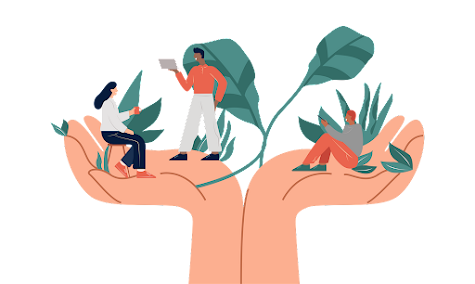The pandemic and changes to the nature of work continue to affect every industry, including the design world. The unpredictable business climate is forcing companies to look not only at how they interact with customers, but also with employees, partners, and other stakeholders. Businesses across the spectrum are turning to design to assess the new reality, pinpoint ways to work effectively, and prepare for a still-uncertain future. Based on my work with clients and partners through 2021, here are some thoughts on where the design industry stands in 2022 and what it will look like going forward:
- Organizations that are still trying to pin down an exact ROI for design are wasting time. No one has cracked the code for a simple equation to show what the return is on investing in design, whether that’s design strategy, experience design, or aesthetics. At this point, it’s clear that thoughtful design is a key element to being competitive in today’s world. Most businesses have embraced design as an essential business tool, and they have either integrated a design team into their business processes, or established relationships with design consultants. Any person in company leadership that is still asking for easily quantifiable proof of the value of design is wasting time and losing ground to competitors.
- Developing AI tools requires a human-centered approach that isn’t there right now. Looking at trends for almost any industry you are likely to see predictions that AI will be further integrated in to that industry. However, design and implementation of AI applications are lacking a human-centered approach, and that is hampering success. AI applications designed without considering the people they will impact will be less effective and alienate customers who don’t feel like their needs are a priority.
- Service design will have an impact in industries where it hasn’t been used before. During the pandemic, retail stores and restaurants had to change on a time to try to serve customers in a new way. Restaurants had to rethink their processes from serving customers in the dining room to taking orders online/by phone, cooking and packaging meals, collecting payment and delivering the food with minimal contact. As these industries move forward, service design can help them figure out what the future of serving their customers looks like. What systems and processes from the pandemic should stay, what pre-pandemic processes will return, and what kind of new hybrid systems should be put in place? Service design can help industries that traditionally haven’t used it to plan for a future where they can efficiently serve customers.
- Companies need to radically re-think how they engage the human beings who deliver goods/services to their customers. The job market is mobile and volatile, and companies are scrambling to find good people and to keep them. How do you solve for both the changing nature of employment and employee experience? Beyond making things better through increased pay and benefits, companies must rethink the role of employees and support them in new and different ways. Employees aren’t just extensions of a company’s brand anymore. They are players in the business ecosystem.
- Digital therapeutics will continue to be a hot trend, and could spur interesting partnerships. Right now, it is mostly pharma companies that are investing in digital therapeutics and navigating the complicated process required to create, test and get approval for this kind of solution. Successful digital therapeutics must be designed by people who both know how to create clinical-level solutions and also know how to design good digital experiences for humans. This could lead to interesting partnerships within the healthcare, design, and tech industries to deliver solutions that can pass regulatory muster and will also be embraced by patients because they are effective and easy to use.
- Companies are integrating behavior science in their business, but not all of them are doing it right. Companies are recognizing the value of behavior science in designing and developing products and solutions, and many companies are bringing in people with expertise in behavior change. Some companies will hire a couple of behavioral scientists or create a behavior change group that works in its own silo. That’s not likely to be effective. The companies that integrate behavioral science across all parts of the Organization are the ones that will reap the greatest benefits. Behavior change thinking needs to be integrated across teams and processes to truly have an impact.
Design is having an effect on nearly every industry, in one way or another, and the role of design in business will continue to expand in 2022. Service design, user experience, behavior change, employee experience, and many other kinds of design will play a role in success and continue to influence how companies connect with stakeholders moving forward.
About author









%20in%20India.png)

